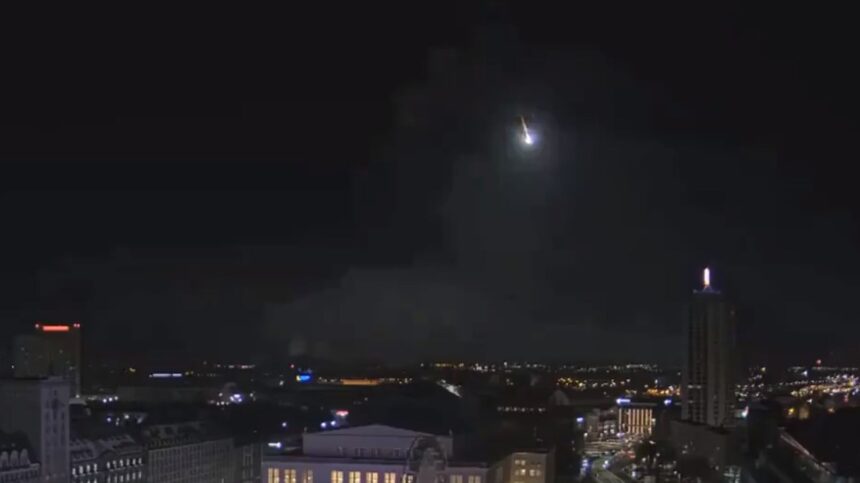Asteroid 2024 BX1 made a grand entrance into Earth’s atmosphere as it erupted into a fiery spectacle above Nennhausen, Germany, just west of Berlin. This diminutive asteroid was detected by scientists a mere three hours before its anticipated impact, making it the eighth instance in which such celestial bodies were identified prior to entering Earth’s atmosphere.
Although asteroid occurrences are relatively common, happening a few times each year, the distinctive aspect of this event lies in the fact that researchers successfully spotted the asteroid well before it made contact with Earth. In a proactive announcement, NASA’s Asteroid Watch team issued a notice on social media, alerting the public to the impending spectacle. As the asteroid descended, it did not go unnoticed, and social media platforms were flooded with videos capturing its journey across the European skies.
Initially referred to as Sar2736, the asteroid was formally named 2024 BX1 by the International Astronomical Union’s Minor Planet Centre. Despite the dramatic visuals, it’s crucial to note that the asteroid was harmless, adding another chapter to our understanding of these celestial events.
The recent event highlights the growing importance of proactive detection and monitoring of celestial bodies approaching Earth. With advances in technology and scientific research, it is becoming increasingly possible to detect and track potentially hazardous asteroids, allowing for timely warnings and precautions to be implemented. This proactive approach not only contributes to the safety and security of our planet but also provides valuable insights into the nature of these celestial events. As our understanding of asteroids and their behavior continues to evolve, it is imperative that we remain vigilant and proactive in monitoring and addressing potential threats from space.


